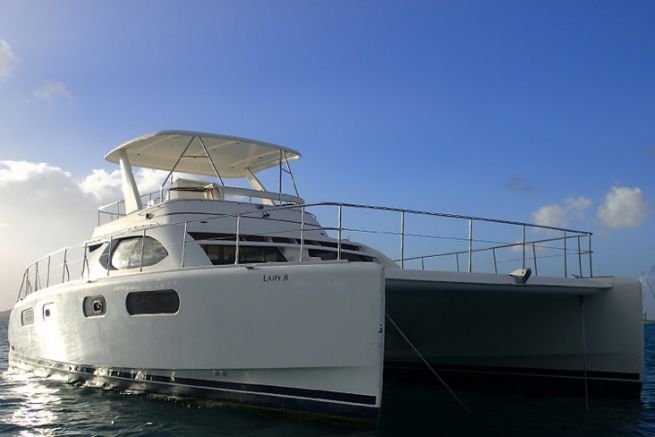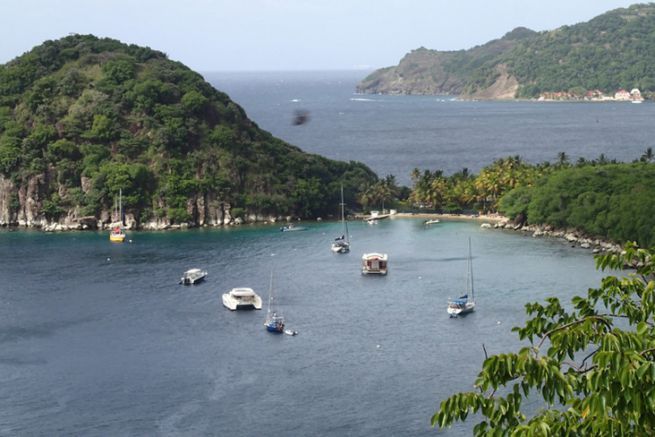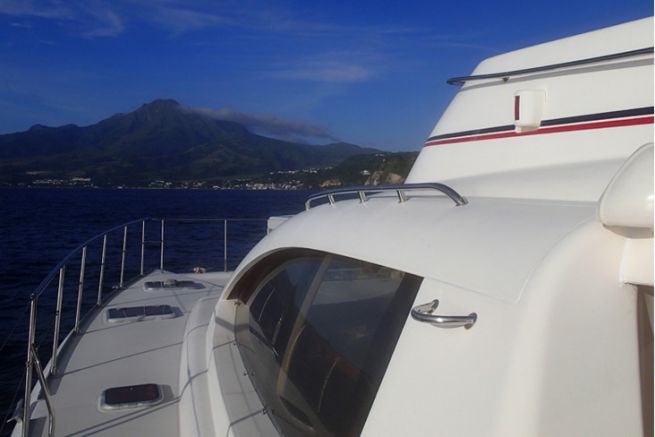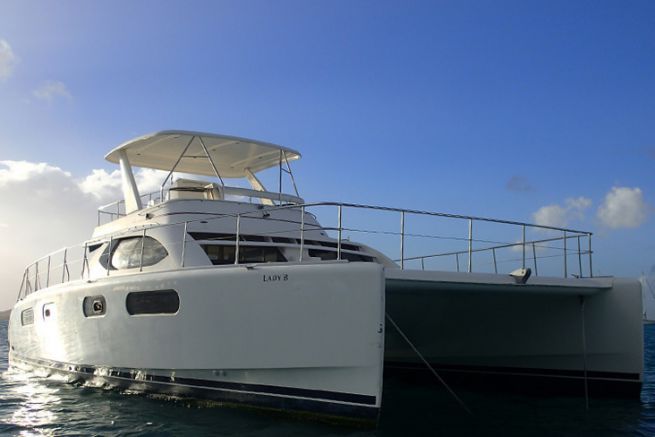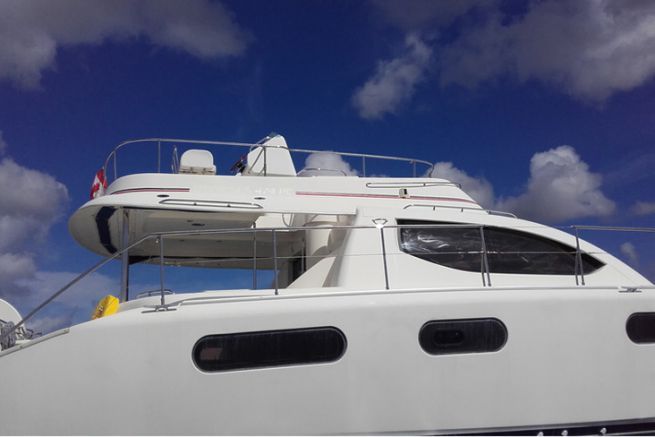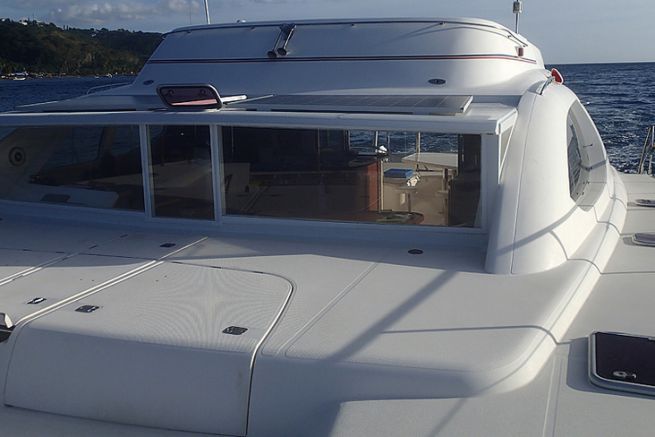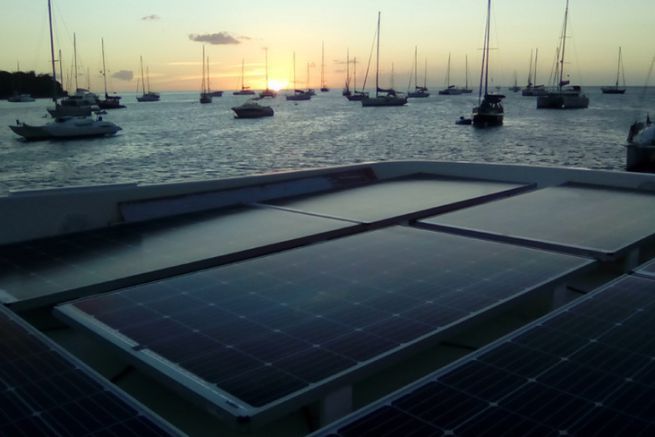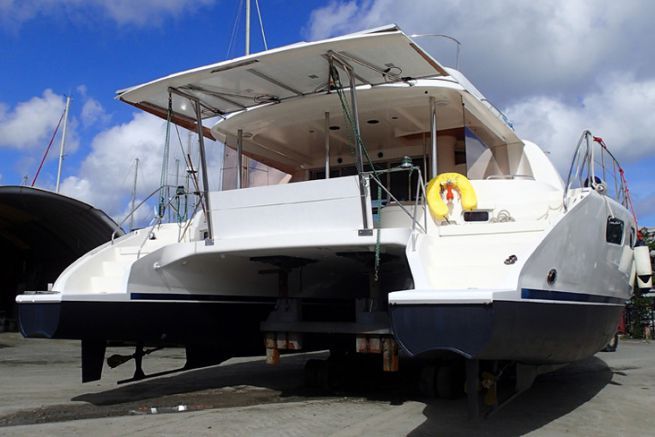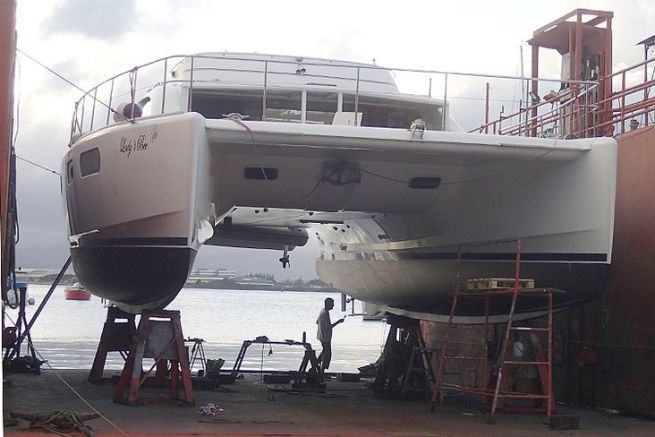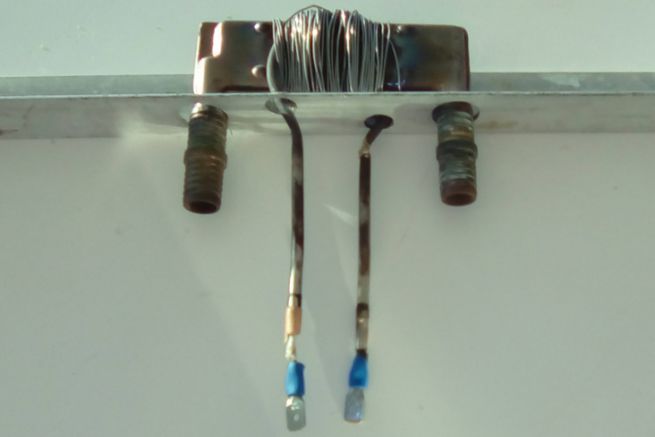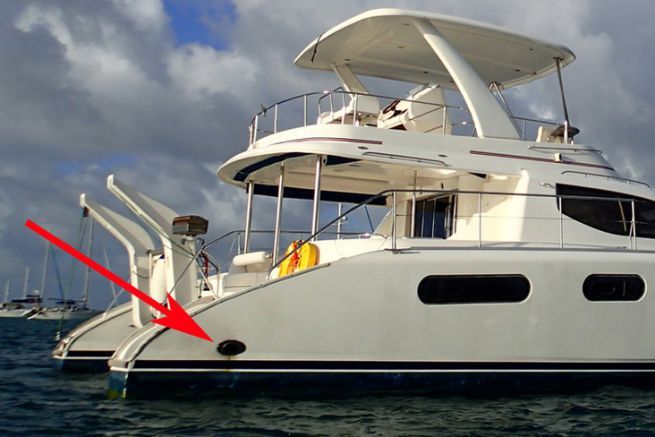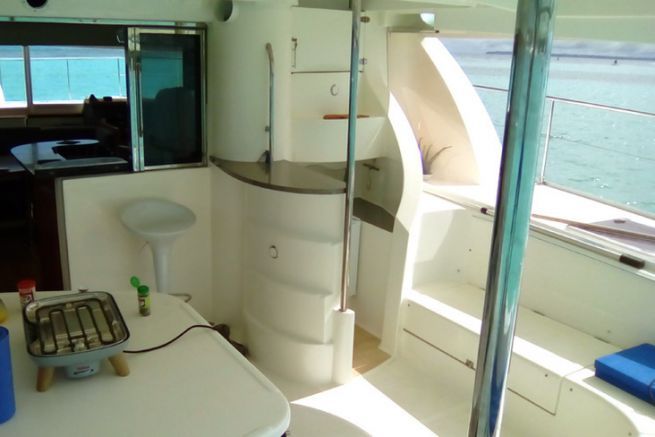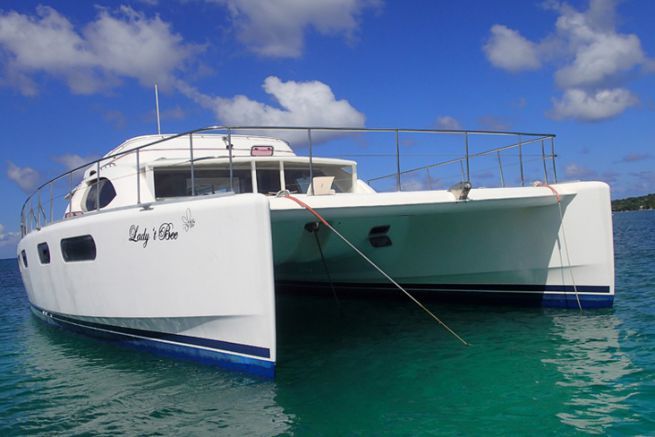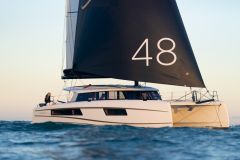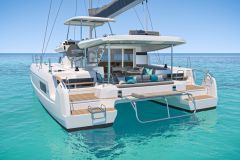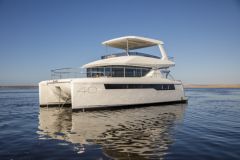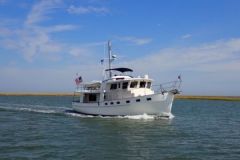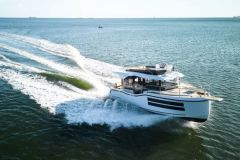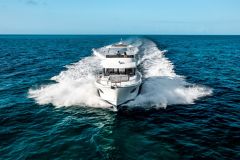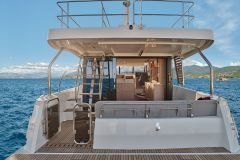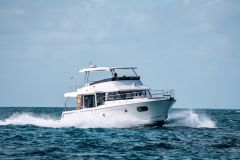Our vision of the "ideal boat": It is a catamaran. Of course it is.
For a number of reasons, the first of which is stability at anchor.
Given that this is the way we spend most of our lives, the low sensitivity to roll is a major factor. And then, as far as habitability, available space and comfort on board are concerned, the catamaran has imposed itself as the best compromise. However, I remain convinced that we can do something very interesting with a trimaran base.
We excluded this way, because Malou does not like..
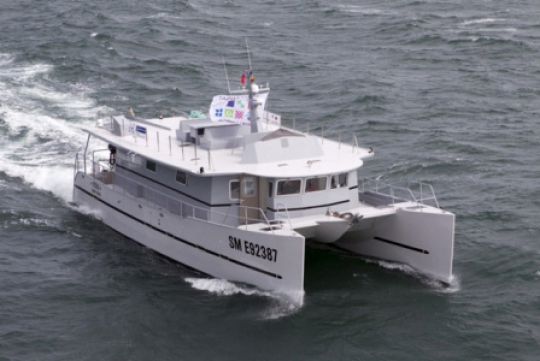
Terms of reference
This boat has no mast, nor any other aerial protuberance that could increase the dunnage (frontal surface causing resistance to the advance), to the detriment of comfort and marine qualities.
It draws the energy necessary for life on board from renewable sources: solar panels and wind turbines.
It has transoceanic autonomy. Because I love more than anything the feeling of freedom that a good canoe inspires, able to go autonomously almost everywhere in this world. The "almost" excluding mainly the high latitudes and the extreme places of which we are not fond, preferring the tropical softness.
For reasons of cost of use (and acquisition), we decided not to exceed 15 meters in overall length, and for reasons of comfort at sea and safety, we set the lower limit at 13 meters.

A catamaran with thermal engines
The technical solution chosen for the propulsion is that of the diesel engines with shaft lines, because it is a perfectly known and mastered way.
Two engines are installed so that they can operate in turn.
This arrangement reduces fuel consumption and ensures that one of the engines is always available for inspection and maintenance.
A cruising speed of eight knots is achieved by running only one of the two engines at 65% of its maximum speed. In this configuration, the boat will cruise at 8 knots and will not exceed 12.5 knots at full speed! (We will come back to the development of these engines and the choice of propellers in a future topic).
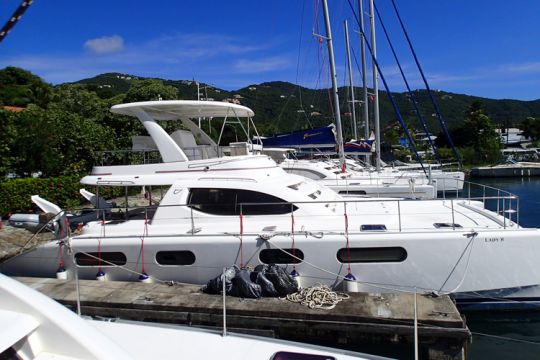
The rare pearl
But how to acquire it? Not easy... There are very few of them on the second-hand market, and they are large boats, built individually and with original features that often make them difficult to resell.
No manufacturer of production boats offers this type of unit for the moment.
The closest thing we can find are catamarans, some sailing, some motorized, whose architecture and design allow them to be transformed into trawlers, with more or less considerable transformations.
That is:
- or the removal of everything that is used to propel a sailboat after its acquisition,
- or the removal of everything "anti-marine" in the case of a "power cat".
We have chosen the latter solution.
Why not transform a sailboat?
We had previously studied carefully the case of some potentially compatible sailboats, but no "coup de coeur" made the balance in their favor.
It must be said that the idea of buying a boat, for a considerable amount of money, and then starting to strip it of a whole bunch of elements (mast, rigging, fittings, anti-drift fins...) until you find yourself the owner of a sort of "demolition yard" and a bundle of junk on the quay that you are going to try to sell for a tenth of its value... This is the kind of project that requires a lot of motivation.
On the other hand, technically, it is a very viable solution, provided that the whole chain of propulsion elements is seriously reviewed.
Working from a motor catamaran base
Starting from a "power cat", things are significantly different, even if the processes are strangely similar.
In the latter case, we will systematically have engines that are much too powerful, with the corollary: too big, too heavy, too greedy and too expensive to use.
As well as a dardage often as ugly as harmful, thanks to these kinds of roof terraces with which these units are generally affixed..
Because of this last point, it took me many months of "reflection" before I could envisage our project on this kind of basis.

The Lady B!
In the end, we chose a "Moorings 474 PC".
This model of motor catamaran was developed and manufactured in the Robertson&Caine shipyard in Capetown for the Moorings company, which operated a large fleet at its base in Tortola in the Virgin Islands, then sold them after six or seven years of operation.
Parenthesis: a large part of the fleet was destroyed in 2017 by Hurricane Irma. Many boats were declared "wrecks." I am sure that there are units that could be refitted as described below, at advantageous conditions..
A negotiated purchase
Having spent a good part of my professional life building boats with my own hands, with Malou's help, and another part, even longer, managing people who wanted to do the same (but without Malou's help...), and knowing that our budget was a bit tight for such a project, we chose this poor Lady who had many after-effects from her years of hard work on charter..
Before buying her, I took my expert's hat and started to find and list the more or less obvious defects affecting the beauty. This list gave us strong arguments, which Malou was able to exploit skilfully, to enable us to acquire our Lady at her fair value, that is to say much less expensive than her owner claimed.
So, we adopted "LADY B", in Tortola, in the British Virgin Islands (BVI). A beautiful lady who is now called "Lady't Bee" because of a dark pun...
In the next episode, the author explains how he made his Leopard 47 PC slimmer .
